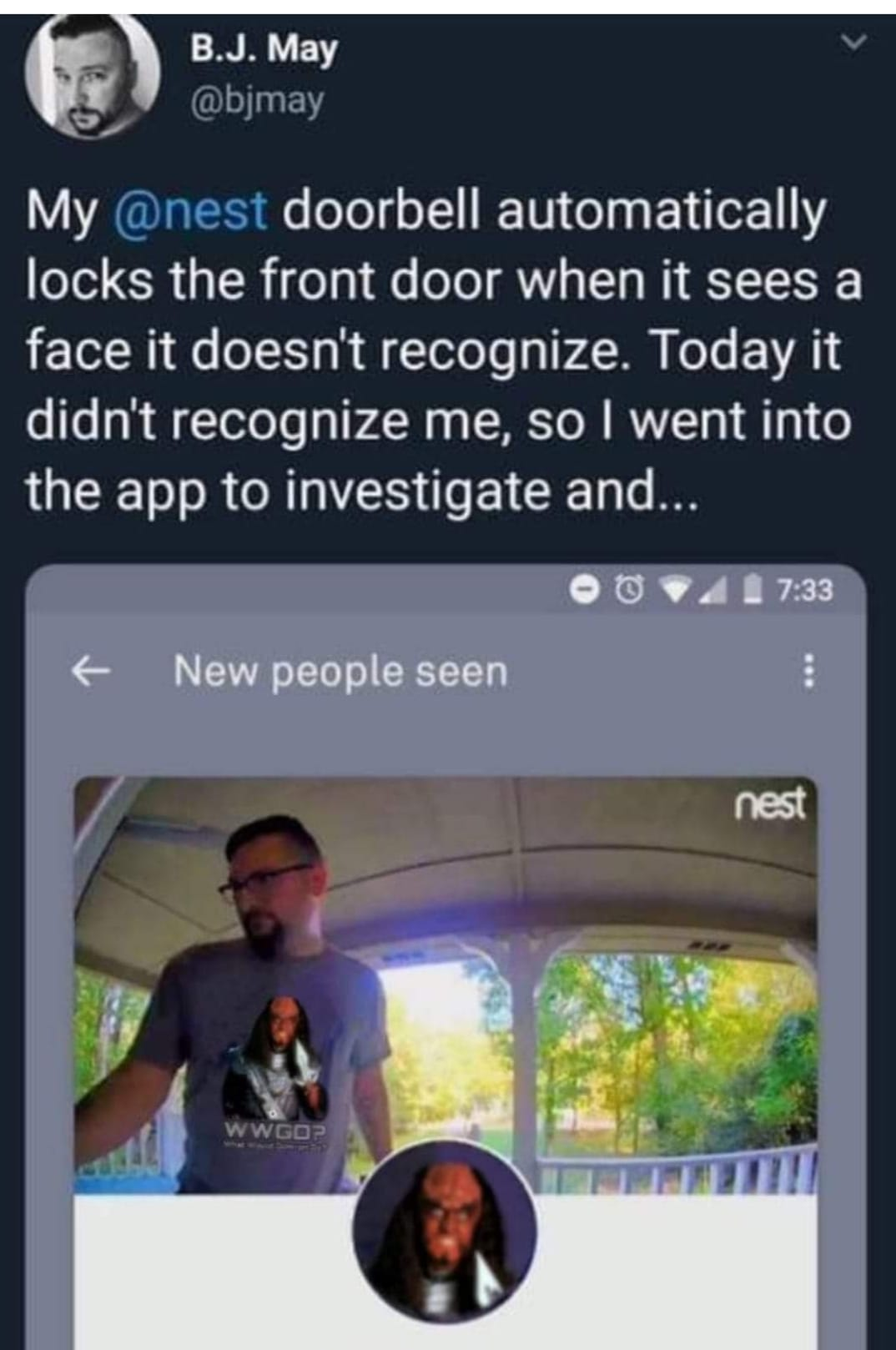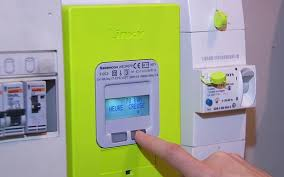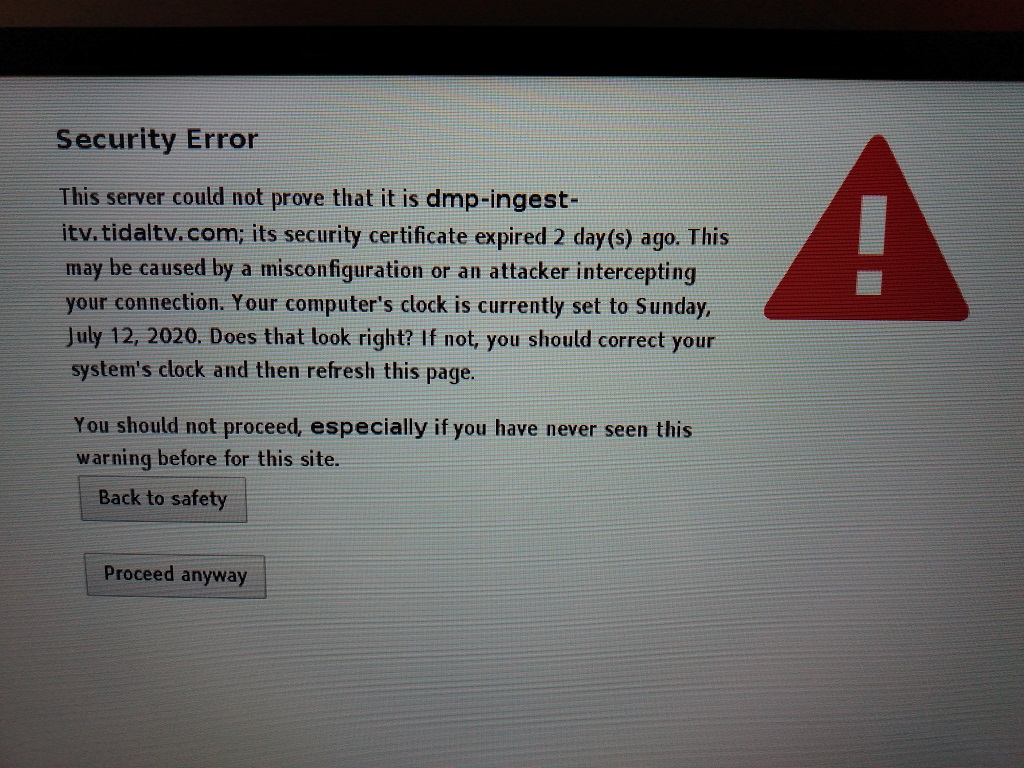Internet of shit
-
@Rhywden said in Internet of shit:
@Gurth Yeah, but in this case it seems to be a software problem so this leads to the question: Do we simply transfer hardware assumptions to software or do we make new rules for that?
I’m sure you know that EU consumer organisations have for years been criticising smartphone makers for not supporting their OSes for long enough. Which, I suppose, kind of answers the question: the law (or perhaps lawmakers) doesn’t really seem to concern itself with the lifetime of software, when consumers feel it should.
-
@Gurth There is still a big difference between no longer updating the software (so it still works, although with degraded security) and bricking it completely.
-
@magnusmaster said in Internet of shit:
A law that mandates devices to work for a reasonable time is way too vague to work.
I never said it was simple :) I just tried looking it up for here in the Netherlands, and ended up at:
https://www.consuwijzer.nl/garantie-reparatie-geld-terug/gekocht-maar-kapot/wat-mag-ik-verwachten
Or, if you would like Google’s take on it in English:
This is a site that is referred to by the Netherlands government web site on the subject of “What are my rights for a product that has broken?”.
The relevant bit:
How long should a product last?
When you buy a product, you should be able to use it normally for a certain amount of time. It should last as long as you can expect it to. The length of time depends on the properties of your product. How long does such a product normally last? And what information do you get with the purchase? What's the price? For example, you can expect an expensive washing machine to last longer than a cheap one. And you can expect less from a second-hand product or a show model than from a new product. Do you want to know how long your product should last? Then take all those properties with you to make an estimate. And check the expected service life with the seller, the manufacturer or an expert.
-
@Rhywden Yeah there should be regulations for how long an appliance must work.
-
@magnusmaster I'd like to see something in the way of: "Everything internet connected is required to receive security updates for either 5 years or for the prospected life span of the product, whichever is longer."
-
@dkf said in Internet of shit:
Now, I don't know what is the actual reasonable expected amount of time for a home video player to work, but it's highly likely to be several years.
My brother still has a working VHS system.
-
-
@Mason_Wheeler said in Internet of shit:
@dkf said in Internet of shit:
Now, I don't know what is the actual reasonable expected amount of time for a home video player to work, but it's highly likely to be several years.
My brother still has a working VHS system.
I just threw out (I think) the last of my tapes.
-
@Mason_Wheeler said in Internet of shit:
@dkf said in Internet of shit:
Now, I don't know what is the actual reasonable expected amount of time for a home video player to work, but it's highly likely to be several years.
My brother still has a working VHS system.
So do I. Not that it has been switched on in the last few years, but I have used it to digitise some things I had taped decades ago.
Then again, I also own a CD-i player, several 1980s computers and a walkman, most of which are really just gathering dust, but they do all still work. Oh, and I still regularly use my 1988-vintage Casio scientific calculator, despite that I’m usually working at my computer when I use that calculator …
-

-
My @nest doorbell automatically locks the front door when it sees a face it doesn't recognize.
Does that mean that the door is unlocked by default and if somebody were to "carefully" sneak up to it, like, with a paper bag over their head, they would just find it unlocked?
-
@cvi they have a smart door lock. I guarantee you they've spent approximately 0 seconds thinking about it.
Edit: rounded to 1 significant digit.
-
@Gąska Well of course, it's a smart lock so that means you don't have to be smart
-
@Gąska said in Internet of shit:
@cvi they have a smart door lock. I guarantee you they've spent approximately 0 seconds thinking about it.
Edit: rounded to 1 significant digit.
Based on lockpickinglawyer's track record, all you need to get into a smart lock is a strong magnet.
-
@PleegWat said in Internet of shit:
Based on lockpickinglawyer's track record, all you need to get into a smart lock is a strong magnet.
I figure a paper bag is a lower requirement than a strong magnet, but that's splitting hairs.
-
@pcooper said in Internet of shit:
@Zerosquare said in Internet of shit:
Another victim of automatic updates:
My bet isn't automatic updates, but Samsung not realizing they have to pay attention to PKI and certificate expiration dates. Just a wild guess, though.
Wonky XML file bricks blu-ray player:
these internet-connected Blu-ray players in question are programmed to log their activities and send copies of this information to Samsung.
Exactly how much the device should log and transmit back to HQ is defined by Samsung in an XML file regularly fetched from [some URL]:
The problem with the XML file is that it wasn't formatted in a way compatible with the device's code. Although a valid XML file, it contained an empty list element:
<?xml version="1.0"?> <Policy><period val="2020-06-18T17:00:01"/> <server type="operating"/>
</Policy>
<list/>Unfortunately for Samsung, the code which handles the processing of the XML file appears not to have been designed to handle that possibility because the empty list produces an invalid memory reference in the device's main program, which causes the kernel to terminate it.
Crashing the main program results in a reboot, but the code for parsing the XML file is hard-coded to run at every boot and is processed early on after startup, so the crash simply reoccurs before a fixed version of the file can be fetched.
The result is the player is stuck in a permanent boot loop.
-
If the Blu-ray player is broken, you can always watch regular TV...
...or maybe not.
-
I bought a smart bulb. Thought it might be nice to use as an alarm clock. So far all I've managed to do is make it flash off and on twice a second because the app that paired with it can't find it anymore. I now live in the dark.
-
-
Lightbulb update. It needed a specific wifi network but I got it running and was plesantly suprised at the colour options which I promptly ignored. It's panned out quite well as an alarm clock and a reminder to go to sleep. However when I switch it off in the app I can't switch it back on by pressing the switch on the wall. Probably by design. It's a novel toy but I couldn't see myself installing them anywhere else but my room for the particular use case I wanted them for.
In general the use case for a lightbul is when I flip the switch I have light. Not I flip the switch, check I'm on the right wifi network, fiddle with the app and then I have light. If your tech creates a barrier for such a simple use case it's probably failing at its job.
-
@DogsB Is that a mechanical switch? Then the app is not able to operate it, so…
-
@Bulb said in Internet of shit:
@DogsB Is that a mechanical switch? Then the app is not able to operate it, so…
I'm not expecting the app to operate the switch. I expect that turning off and on the switch to make the light work regardless of status in the app.
-
@DogsB That, unfortunately, is an expectation various users are unlikely to agree on. Some will want it to turn on on power resume, some will not. It might have a configuration option for it somewhere in the app.
-
@Bulb said in Internet of shit:
@DogsB That, unfortunately, is an expectation various users are unlikely to agree on. Some will want it to turn on on power resume, some will not. It might have a configuration option for it somewhere in the app.
A magical future where I have to configure lightbulbs. Thanks for reminding what IOT is.
-
@DogsB said in Internet of shit:
@Bulb said in Internet of shit:
@DogsB Is that a mechanical switch? Then the app is not able to operate it, so…
I'm not expecting the app to operate the switch. I expect that turning off and on the switch to make the light work regardless of status in the app.
HERETIC! The App is the Supreme Being! (An IoT lightbulb in my house? Not on my life!)
-
@DogsB Honestly smart bulbs seem like a solution in search of a problem - the non-smart solution (a physically wired in switch, usually in a convenient place near the door) is almost 100% robust and really quite convenient.
-
@bobjanova said in Internet of shit:
@DogsB Honestly smart bulbs seem like a solution in search of a problem - the non-smart solution (a physically wired in switch, usually in a convenient place near the door) is almost 100% robust and really quite convenient.
And we already have The Clapper!
-
@DogsB said in Internet of shit:
A magical future where I have to configure lightbulbs. Thanks for reminding what IOT is.
Have you tried switching it off and on again?
-
@dkf said in Internet of shit:
@DogsB said in Internet of shit:
A magical future where I have to configure lightbulbs. Thanks for reminding what IOT is.
Have you tried switching it off and on again?
You must be mistaken, as that only applies to IT.
For IOT the right procedure is to turn it off for two seconds (not counting one second, neither shall it be three seconds), turn it on for two seconds but then wait six seconds more (that's counting two and six, directly counting to eight is right out), then turn it off again and to repeat the process until it strobes twice or you simply timed things wrong at the fourth cycle. In which case you start the whole procedure anew until successful or the device in question suffers a blunt force failure.
And that's just the easy procedure.
-
@bobjanova said in Internet of shit:
@DogsB Honestly smart bulbs seem like a solution in search of a problem - the non-smart solution (a physically wired in switch, usually in a convenient place near the door) is almost 100% robust and really quite convenient.
I think the real use of them is remote operation, and the only actual use I can think of for that is to make it seem to potential burglars that somebody is home. I’m a bit hard-pressed to find other situations in which you may want to switch the lights on or off when nobody is there.
Though a couple of old-fashioned timers would achieve that just as well, of course.
-
@bobjanova said in Internet of shit:
@DogsB Honestly smart bulbs seem like a solution in search of a problem - the non-smart solution (a physically wired in switch, usually in a convenient place near the door) is almost 100% robust and really quite convenient.
They're useful for appartments like mine where the foundations were laid in the early 50s - the switches and power outlets are not always in the most convenient position (and the switches don't have a ground wire so you can't use smart switches as a compromise) and rewiring the place is also a no-go.
It's useful for my bedroom where I can dim the four lights individually - I have a setting for book reading before I go to sleep, for example. And now I also don't have to stand up anymore if I want to turn off the lights.
They're also programmed in a way that their default state is "on" - if they lose power (e.g. after using the physical switch) they'll start at 100% after they regain power, equivalent to a dumb light.
-
@Gurth said in Internet of shit:
I think the real use of them is remote operation, and the only actual use I can think of for that is to make it seem to potential burglars that somebody is home.
(inhales)
Though a couple of old-fashioned timers would achieve that just as well, of course.
Damn,
 'd in the original post. (some of the newer old-fashioned timers even have a fuzzy on/off so they're never at exactly the same time)
'd in the original post. (some of the newer old-fashioned timers even have a fuzzy on/off so they're never at exactly the same time)
-
@JBert said in Internet of shit:
turn it off for two seconds (not counting one second, neither shall it be three seconds)
You know it’s
 when the actual instructions are indistinguishable from Monthy Python.
when the actual instructions are indistinguishable from Monthy Python.
-
-
@Mason_Wheeler said in Internet of shit:
Um, yes, I know that was his joke. I just mentioned that it wasn't even hyperbole, it is exactly as ridiculous as he wrote.
-
@topspin Admit it was at least a bit of a hyperbole. I doubt the actual instructions mention the alternative resolution of “the device in question suffers a blunt force failure”.
-
@DogsB said in Internet of shit:
@Bulb said in Internet of shit:
@DogsB Is that a mechanical switch? Then the app is not able to operate it, so…
I'm not expecting the app to operate the switch. I expect that turning off and on the switch to make the light work regardless of status in the app.
You should probably get some people to help you then. You know, many hands make light work.
-
-
@dcon said in Internet of shit:
@bobjanova said in Internet of shit:
@DogsB Honestly smart bulbs seem like a solution in search of a problem - the non-smart solution (a physically wired in switch, usually in a convenient place near the door) is almost 100% robust and really quite convenient.
And we already have The Clapper!
Mine says stuff from Darth Vader when it switches. Novelty is as novelty does...
-
@JBert said in Internet of shit:
@dkf said in Internet of shit:
@DogsB said in Internet of shit:
A magical future where I have to configure lightbulbs. Thanks for reminding what IOT is.
Have you tried switching it off and on again?
You must be mistaken, as that only applies to IT.
For IOT the right procedure is to turn it off for two seconds (not counting one second, neither shall it be three seconds), turn it on for two seconds but then wait six seconds more (that's counting two and six, directly counting to eight is right out), then turn it off again and to repeat the process until it strobes twice or you simply timed things wrong at the fourth cycle. In which case you start the whole procedure anew until successful or the device in question suffers a blunt force failure.
And that's just the easy procedure.
Reminds me, what if you have a series of bulbs, but only one is malfunctioning, so you want to reset the malfunctioning one only? Doing the procedure would reset them all!
Filed under: Batch formatting!
-
As insane as the procedure sounds, it's a working solution to a non-trivial problem: you can't easily put a reset switch on a lightbulb. And even if you could, how would you access it when it is powered on? Not to mention that the bulb may be installed in a hard-to-reach place. So resetting-via-special-power-pattern is not as stupid as it looks.
(Whether IoT lightbulbs are a useful invention in the first place is a different question.)
-
@Zerosquare said in Internet of shit:
you can't easily put a reset switch on a lightbulb
Yes, you could. I’m sure I already talked about this earlier in this thread, or perhaps in another one, but there is plenty of room to put one in, say, the side of the screw thread.
how would you access it when it is powered on?
That would be a problem, but solved easily enough by using a switch that doesn’t require the device to be powered: for example, a switch that sticks when pushed in, then when the light powers on, it detects it, resets and pops the switch back out.
Not to mention that the bulb may be installed in a hard-to-reach place.
This is a problem that doesn’t apply just to lightbulbs but all sorts of stuff. My smart TV became unresponsive yesterday, so I had to dig around blindly at the back of a cupboard to reach the plug in order to reset the TV, and that’s certainly not the least-accessible device in my house.
-
@Zerosquare said in Internet of shit:
you can't easily put a reset switch on a lightbulb
Sure you can. And most light fittings are accessible by reaching up or standing on a chair - in extreme cases you might need a small stepladder, but that's something you must already have since you managed to change the bulb in the first place.
-
@Zerosquare said in Internet of shit:
Not to mention that the bulb may be installed in a hard-to-reach place.
That's only an issue if your device is designed such that you expect resets to happen a significant number of times over the life time of the product (the light bulb). That, in itself, should tell you something about the "smartness" of the device...
(Whether IoT lightbulbs are a useful invention in the first place is a different question.)
In all honesty, in the abstract, it's not such a dumb idea. There is the novelty factor of e.g. changing the colour, but then there are a couple of actual use cases that were mentioned up-thread -- including some (using it as an alarm clock) that is interesting in that it's really adding a new feature to the bulb, rather than just slightly "improving" the existing (of course you can always add a timer somewhere else on the circuit, but having it built into the bulb makes the thing much easier to retrofit in existing circuits).
The main issue I have is what's reflected in my first comment: IoT objects, like everything computer-related, are now built with the expectation that they will randomly fail for no reason, and that they will require complex frameworks, networks connections and so on, for the most basic tasks. This is the same with basic apps that can't work without sending GB of data to the cloud, web pages that weight several tens of MB and wouldn't load on a 10 years old device (I have an 8-years old iPad and more and more web pages (including many that are just text + picture, not fancy JS games or what-not) fail to load, crashing repeatedly along the way...).
I feel it's somehow related to how we've all accepted far too easily the "as-is" clause in software. Everyone, including non-technical people, know that anything computer-related is flaky, may fail at any time, and will require constant restarts and updates. You would never accept that from a physical object (i.e. a light bulb!).
That explains why IoT things are seen as crappy: they aren't crappier than the average software item, it's just that all software is shit.
-
@remi FWIW I've used a couple internet-connected lightbulbs for a while now, and never had any kinds of issues with them. They work like normal bulbs if operated via the switch (although that's not the best way to use them) and I've never really had any issues with things not working (aside from when a brownout causes my network to act funky, but that's not their fault...)
-
@Zerosquare said in Internet of shit:
As insane as the procedure sounds, it's a working solution to a non-trivial problem: you can't easily put a reset switch on a lightbulb. And even if you could, how would you access it when it is powered on? Not to mention that the bulb may be installed in a hard-to-reach place. So resetting-via-special-power-pattern is not as stupid as it looks.
(Whether IoT lightbulbs are a useful invention in the first place is a different question.)
There was a bit of a hubbub some time ago when people discovered that to change settings / readouts on a smart meter they had to flicker a flashlight onto the device.
How stupid this was, they all went!
However, none of them could answer the question how to achieve the two following two goals otherwise:
a) keep the device completely sealed to prevent tampering (which is a legal requirement, by the way, same as the old analogue ones) and
b) keep the device completely sealed because it's connected to a high-power source.
-
@Rhywden said in Internet of shit:
However, none of them could answer the question how to achieve the two following two goals otherwise:
 How about a physical button on the device?
How about a physical button on the device?Smart electricity meters around here have buttons that you can press to change what the screen shows, just GIS "linky" for many pictures, like this one:

Not using a very well-known and perfectly working method and using a completely different way, used nowhere else, to interact with the device (flashing light at it) definitely looks to me like a huge
 .
.
-
@remi said in Internet of shit:
buttons
probably don't count as
@Rhywden said in Internet of shit:
completely sealed
The one I have is in a sealed transparent box and has some kind of optical data link. When the utility company worker reads it out, they have a device that can talk over that data link, when I read it myself, I have to wait for the desired datum to show on the display that continuously cycles among I think four of them.
-
@Bulb Meters here are sealed as well, and I don't see why buttons wouldn't work with that requirement. You can have water-proof buttons so it's not hard to have buttons that don't allow any ingress into the equipment.
(obviously the buttons allow interacting with the equipment, but so does flashing a light at it, so clearly the "sealed" requirement is not about disallowing interaction but just ingress)
(edit: look at the above picture, the cut-off box on the right of the meter has a physical seal of the kind that is also present on the meter itself, even though it's not visible on the picture (I would need to get up and walk to the front garden to check where it is exactly on the meter, so that's not going to happen))
-
Plus, if for some reason sealed pushbuttons can't be used, capacitive controls are still an option.






